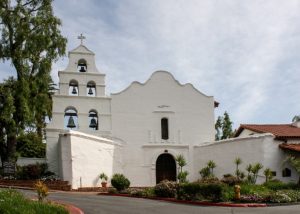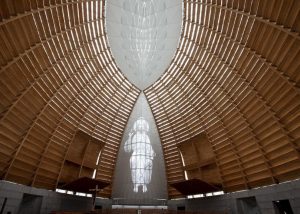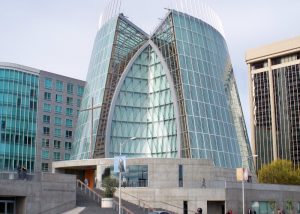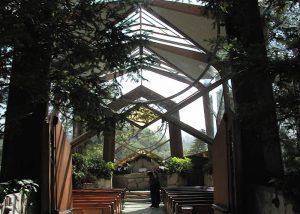This post first appeared in 2019.
From the 19th-century Mission San Diego de Acalá to the ultra-modern space of Oakland’s Cathedral of Christ the Light, these worship spaces are very different examples of California architecture. The common theme that unites them is the way they use their environments and direct the eye with inventive use of light.
Mission San Diego de Alcalá
This 1813 mission church, the first of the Alta California missions, is a beautiful forerunner of California archictecture to come. The adobe walls are literally made from the soil on which it stands, and the light color stands out against the brown of the hills and takes on different hues depending on the light. The bell tower retains one of the original mission bells.
Cathedral of Christ the Light Interior
The name of Oakland’s Cathedral of Christ the Light says it all. Architect Craig W. Hartman designed the building, which was completed in 2008, to remind worshipers in part of the Christian Bible’s miracle of the loaves and fishes, with its “scale-like” slatting made from wood the color of bread.
Cathedral of Christ the Light Exterior
The cathedral’s exterior resembles a bishop’s mitre, a symbol of the building’s place in the Catholic hierarchy of the region–it is the seat of the Bishop of Oakland.
Wayfarers Chapel
Completed in 1951, the Wayfarers Chapel in Rancho Palos Verdes was designed by Lloyd Wright (son of Frank Lloyd Wright). Few churches incorporate the natural environment into their designs as wholly and seamlessly as this one. Entering it, one feels as though one is entering a grove of trees, for an experience that is at once intimate and majestic.






